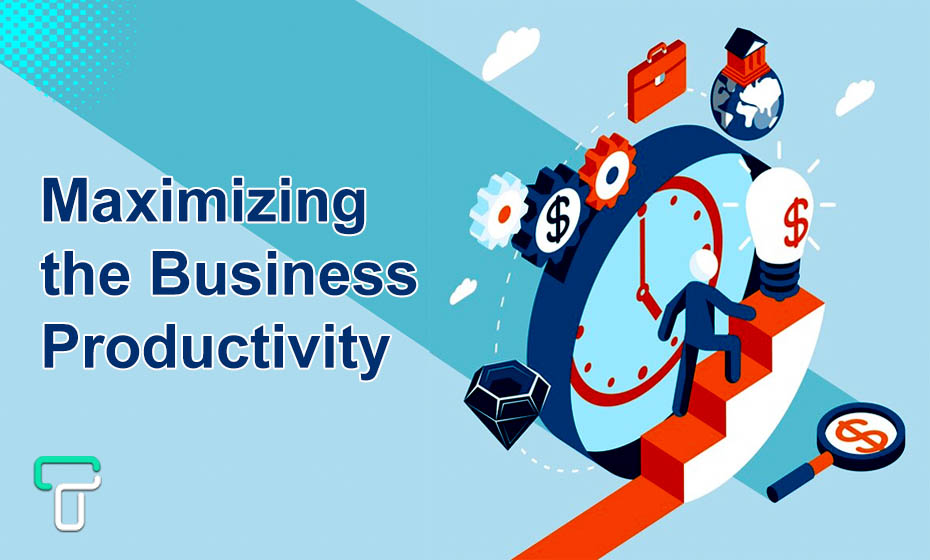Effective strategy, simplified procedures, clear and frequent interaction, and a dedication to constant enhancement are all vital components for achieving maximum business efficiency. Businesses can increase output by providing direction, assigning activities in order of importance, and giving workers significant autonomy. It is also important to foster a climate of open communication, provide resources for professional growth, and track results. In this article, we will explore various strategies that can help businesses maximize their productivity and gain a competitive edge in the market.
How to Maximize the Business Productivity
In the undersection, we have mentioned the best strategies to maximize business productivity.
Set Clear Goals
The truth is only possible to accomplish optimal effectiveness by establishing specific goals. Your company and its employees will benefit much from having well-defined goals to work toward. SMART goals are well-defined, attainable, relevant, and time-bound. Spell out your goals and explain why they are important.
Please ensure everyone on your team is aware of and committed to these aims by sharing this information with them. Having well-defined objectives aids resource allocation, staff motivation, and overall organizational success. They offer a structure within which decisions can be made, facilitating the setting of priorities and attaining goals. It is important to evaluate performance toward objectives continuously and make any necessary modifications.
Prioritize Tasks
Maximizing company productivity requires effective job-setting priorities. When time and resources are limited, prioritization becomes critical. First, you must figure out how important and urgent each assignment is. Find out which activities will help you achieve your business objectives and will have the greatest impact.
Consider how different duties are interconnected and give extra weight to those that could free up time for other endeavors. Work together as a group to have access to a wider range of ideas and opinions. You can prioritize your job using tools like the Eisenhower Matrix or the Method of Shortest Possible Actions and Greatest Impact. Goals should be reconsidered regularly.
Streamline Processes
If you would like to get the most out of your company, you must simplify what you do. Examine current processes to spot slowdowns, inefficiencies, and room for growth. Try to find mundane activities that can be automated, simplified, or eliminated. Dissect laborious procedures into more manageable sub-steps. If you want consistency and fewer mistakes, standardize processes and set clear standards.
Automate mundane, time-consuming processes with the help of integrated technological solutions and tools. Create an environment where employees feel empowered to offer ways to improve processes. Continually assess and fine-tune operations to meet shifting customer requirements and market trends.
Delegate and Empower
Successful delegation and autonomy for staff are cornerstones of every successful company. The key to efficient delegation is matching team members with tasks that best utilize their strengths and areas of expertise. Make your needs known, supply the tools, and establish reasonable timelines. Proactively empower your staff, then give them the freedom to make decisions on the job rather than just handing over the keys.
It helps individuals take the initiative and become accountable for their choices. Allow workers some degree of independence and freedom to think creatively to solve problems and feel more invested in their work. Maintain consistent communication, encourage development, and acknowledge accomplishments.
Effective Communication

Increasing corporate output involves a focus on concise and clear communication. Having an open line of communication between team members and between departments helps everyone work together and understand one another. Schedule consistent contact methods like group chats, email updates, and online project management software. Make sure your communications are clear, timely, and focused.
Be receptive to feedback, clarify ambiguous points, and remain open-minded. Communicate quickly and effectively with technological means like instant messaging and video conferencing. Simplify difficult concepts and adjust your delivery based on who you’re talking to. Open lines of communication in the workplace bolstered trust, clarity, and understanding.
Continuous Learning and Development
Successful and productive businesses invest significantly in the capacity of their staff to learn and develop constantly. A culture of development, creativity, and flexibility can be encouraged by providing workers opportunities to learn and grow. Provide opportunities for professional growth by funding training programs, workshops, and online courses. Mentoring, interdisciplinary teams, and specialist groups should all be encouraged to facilitate the exchange of information.
Maintain a cutting-edge advantage by keeping abreast of developments in your field. Employees that seek out new knowledge should be recognized and rewarded. Staff participation, productivity, and creativity can all benefit from a company culture that stresses and rewards continued education.
Encourage Collaboration
Collaborating is a strong tool for improving productivity in work environments. Create an environment where cooperation and teamwork are encouraged. Use project teams, brainstorming sessions, and online collaboration tools to encourage department interaction. Motivate team members to speak out, listen intently, and share their thoughts. Create a welcoming space that welcomes and appreciates different points of view and constructive criticism.
Give your team access to the software for managing projects and communicating effectively with one another. Applaud and compensate people who work along well. Functioning together improves your problem-solving capacity, sparks creativity, and makes the most of the group’s combined expertise.
Embrace Technology
Adopting modern technology is necessary when you intend to boost your company’s efficiency. Streamline procedures, automate mundane chores, and boost productivity using appropriate software and tools. Improve teamwork and communication by switching to cloud-based project management, CRM, file sharing, and conferencing software.
Get in touch with your analytical side and use data to guide your next move. New technologies like AI, ML, and RPA should be investigated to enhance workflow optimization further. Adapting to technological changes helps you meet the market’s and your competitors’ expectations. It boosts efficiency by releasing human resources and materials that can then be dedicated to more strategic endeavors.
Conclusion
Ultimately, maximizing legal output calls for a combination of effective techniques. Business operations can be optimized, and higher productivity levels can be achieved by establishing clear goals, prioritizing tasks, streamlining processes, delegating and empowering employees, fostering effective communication, encouraging continuous learning, fostering collaboration, and embracing technology. These methods boost productivity, help employees perform more efficiently, and ultimately help a company succeed. Organizations may thrive in the face of uncertainty, maintain a competitive edge, and accomplish their missions more efficiently and effectively by adopting and continuously refining such strategies.

